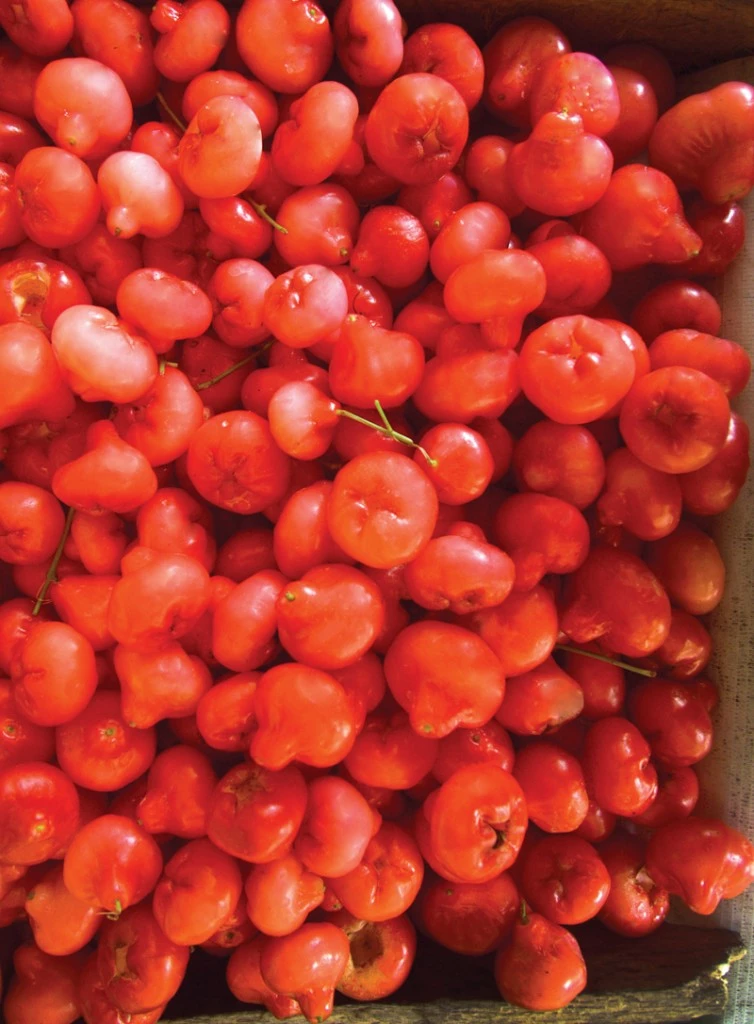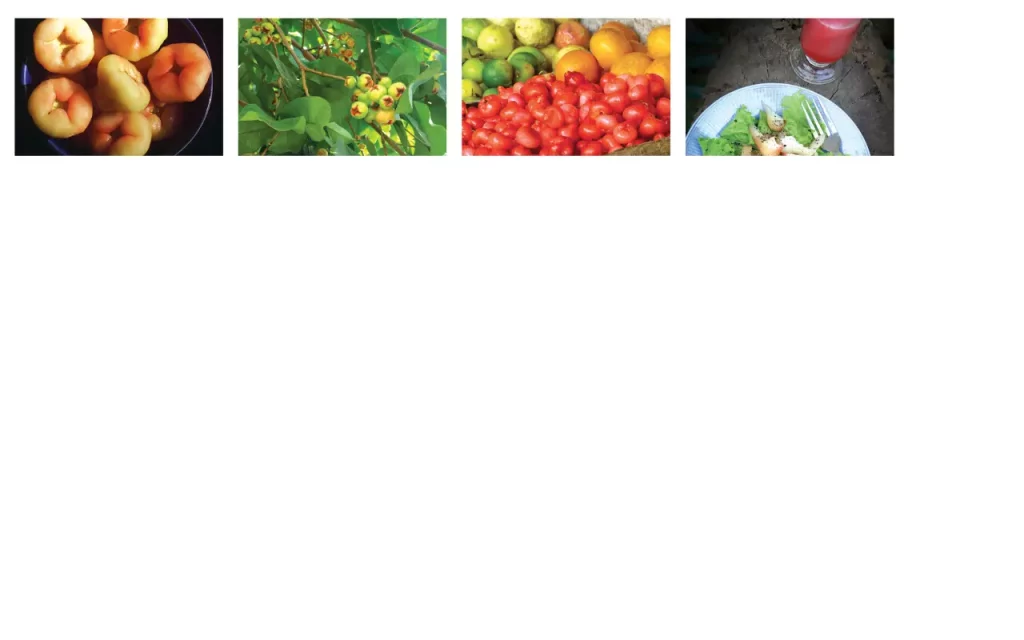Birds love it. Bats love it. Everyone from little children to grown adults love it. Take a bite of its crunchy flesh and you will know why it’s called the ‘love apple’
Words and Photographs: Manu Gunasena

It’s also called the wax apple, the water apple, the rose apple and a host of other names but for millions of Sri Lankans it is known simply as the jambu, the fruit whose the seasonal blossoming heralds the Sinhala and Hindu new years in April.
The season starts early with the flowers coming into bloom in February. This is soon followed by the appearance of tiny fruit. Within two weeks they grow to maturity and suddenly one morning you will awake to find that tree in your garden transformed into a Christmas tree, lit with the splendour of a thousand red bulbs.
Christmas, alas, is all too fleeting, and the same is true of the jambu crop – this spectacle lasts for only three days on average and, before you can say Syzygium
samarangense, which is the Latin name for the fruit, you will discover to your dismay that the tree has shed its rubies and stands forlorn. Scattered on the ground will be hundreds of clues to the mystery of the vanished jambu – the silent thief is none other than nature herself.
But from this barrenness another crop will come. Small flowers begin to appear almost immediately after the first season has come to a close. The cycle repeats, but this time when the fruits ripen and drop en masse it won’t be for another six months that they reappear. In August, the same February/March performance is re-enacted and the jambu jamboree closes for good for the year.
There are two types of jambu descending from the family Myrtaceae found in Sri Lanka. Native to the Island is the smallest and sweetest; crunchy with a slight tang, it has a waxy skin and is pinkish red in colour. The other variety found here hails from Malaysia and is known as pini jambu, its name probably coming from the Chinese, pinyin. It’s creamy in colour and is bigger and more watery than its Sri Lankan cousin. You’ll find this variety in red too, when it’s referred to as the Malaysian red jambu.
They grow best in moderately wet climates and as a result are found in most areas of the Island. The jambu tree grows to over 15 metres, but the leaves differ between the two species: smaller on the Sri Lankan jambu. The jambu itself is bell-shaped and comes in a variety of colours. The big variety is often whitish, cream, pale green or whitish with pink or red patches In the local variety there are many seeds but the Malaysian kind is mostly seedless, making it extremely difficult to propagate since the jambu can only be grown from seeds and not from cuttings. Once established the tree will bear fruit in about five or six years.
Scattered on the ground will be hundreds of clues to the mystery of the vanished jambu – the silent thief is none other than nature herself
The jambu has not been subjected to large-scale cultivation on a commercial basis in Sri Lanka, instead found only in the wild and in domestic gardens. As a result of this and also due to its short shelf life, only small quantities of the fruit find their way to market. The majority of what the tree produces is often eaten by birds and bats, whilst much goes to waste when the fruit fall to the ground overnight once their three days of maturity are over. The remaining few are often gobbled up by children eating them straight from the branches.
Whatever is left after all this is put to a variety of uses, including salads, pickles, desserts and natural medicines. The art of making a simple jambu salad is to mix salt and pepper with apple vinegar and a few drops of lime juice. Dice the fruit – for this dish the Malaysian variety is best – mix well with the sauce and serve with lettuce. To make pickled jambu, which is popular as a accompaniment to a round of drinks, first mix salt and pepper in water and add pieces of dried red chilli. Dice a jambu, soak it in the mixture and leave for two days.
Make the most of the fruit’s sweet side by stewing it in syrup. Add sugar to water and bring to the boil before add a clove and a cinnamon stick. Add the jambu once the mixture has turned to syrup, then store in a jar. Or try jambu with ice cream or as part of a fruit salad. What about a jambu mocktail to quench your thirst? Simply liquidise a few jambu, adding sugar and a few drops of lemon juice.
If consuming too much of the sweet stuffs worries you, however, don’t fret: the jambu is also known in native medicine. The fruit is used as an effective way to reduce blood sugar levels, improve vision and combat diarrhoea, while the leaf is pounded and used to treat cracked tongues, coughs and headaches.
What’s better than crunching on some juicy jumbu while you enjoy your holiday in this tropical isle?



